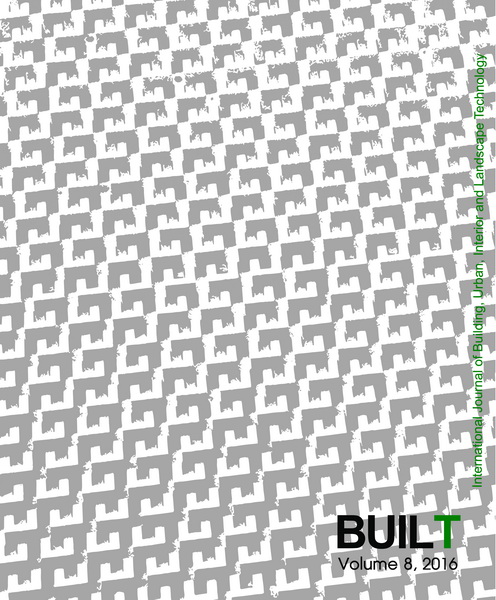The Study on Promoting Hybrid Canal-Rail Connectivity in Bangkok and its Vicinity
Keywords:
Hybrid connectivity, Water transport, BangkokAbstract
The role of water-based transport has diminished gradually over the last few decades while the dominant role of traditional land-based transportation system could not be sustaining solution for Bangkokians. In the same time, mass transit system has been proposed for alternative solutions, while the current network of waterway are in the circumstance of inadequate accessibility, poor inter-modal linkages as well as unsafety. This research intends to present an idea of hybrid land based and waterway connectivity on the basis of binary logistic regression model. The introduction of some measures to improve the transportation system along these canals in Bangkok could be recommended.The result of study also exhibits how the reincarnation of this mode of transport can leave the urban transportation planners with substantial alternatives to enhance the existing mobility condition when road based congestion and safety issues still remain unsolved. Finally, this study also provides insight to incorporate water transport within the mainstream of transportation planning and progress towards a sustainable integrated transportation system which eventually recalled the appealing of “Venice of East” towards hybrid canal-rail connectivity in Bangkok as a postmodern transportation.
Downloads
References
Askew, M. (1996). The rise of moradok and the decline of the yarn: Heritage and cultural construction in urban Thailand. Sojourn: Journal of Social Issues in Southeast Asia, 1(1), 183 – 210.
Bangkok Metropolitan Administration, Office of Traffic and Transport. (2013). New decades of Bangkok’s Canals: A handbook of water transit for modern Bangkok. Bangkok: Office of Traffic and Transport, Bangkok Metropolitan Administration.
Bangkok Mass Transit System [BTS]. (2015). BTS skytrain system - structure of routes and stations. Retrieved April 20, 2015, from http://www.bts.co.th/corporate/th/02-structure02-1-1.aspx.
Bernick, M. S. & Cervero, R. B. (1996). Transit villages in the 21st century. New York: McGraw-Hill.
Burton, E. (2000). The compact city: Just or just compact? A preliminary analysis. Urban Studies, 37(11), 1969 –2001.
Christensen, R. (1997). Log-linear models and logistic regression (2nd ed.). New York: Springer.
Dittmar, H. & Ohland, G. (2004). The new transit town: Best practices in transit-oriented development. Washington, DC: Island Press.
Hamton, F. (2010). From urban sprawl to compact city: Analysis of urban growth management. Saarbrücken: VDM Verlag Dr. Müller.
Iamtrakul, P., Thongplu, W. & Kritayanukul, P. (2013). Transformation of water transportation in Bangkok. Journal of Society for Transportation and Traffic Studies, 4(4), 34 – 45.
International Business Publications [IBP]. (2013). Thailand Transportation Policy and Regulations Handbook. Washington, DC.: Author.
Israel, G. D. (1992). Determining sample size. Gainesville, Florida, U.S.: University of Florida.
Kapteyn, A. (1985). Utility and economics, De Economist.De Economist, 133(1), 1 – 20.
Mateo-Babiano, I. B. (2012). Public life in Bangkok’s urban spaces. Habitat International, 36, 452 – 461.
Marine Department [MD], Ministry of Transport and Communication. (2014a). The amount of boat commuters at Khlong Pha Kanong Pier in 2014 (Statistic yearbook). Bangkok, Thailand.
Mass Rapid Transit Authority of Thailand (MRTA). (2015). M.R.T. Chaloem Ratchamongkhon Line. Retrieved April 20, 2015 from http://www.bangkokmetro.co.th.
Ministry of Interior, Department of Provincial Administration, Official Stations Registration System. (2013). Registed Population Data in year 2013; Department of Provincial Administration, Ministry of Interior.
National Statistical Office [NSO]. (2004). Use time survey 2004. Bangkok, Thailand: Author.
Rodrigues, G. (2007). Logit models for binary data (Lecture notes). Retrieved from http://data.princeton.edu/wws509/notes.
State Railway of Thailand [SRT]. (2015). Airport rail link (Bangkok). Retrieved April 20, 2015 from http://www.srtet.co.th/internet/en/index.html.
Steiner, F. R. & Butler, K. (2007). Planning and urban design standards. Chicago, Illinois: John Wiley & Sons.
Tanaboriboon, Y. (1995). Bangkok water transport: An overlooked alternatives. In R. Bruttomesso (Ed.), Cities on water and transport (pp. 43-52). Venedig: Città d’Acqua.
The Center for Transit-Oriented Development [CTOD]. (2010). What is Transit-Oriented Development? TOD tools for metropolitan planning organization. Berkeley, California: Author.
The Rockfeller Foundation. (2015). Hybrid canal-rail connectivity linking Bangkok’s canals networks to mass rapid transit lines, by Thammasat University. Bangkok, Thailand: Author.
Union Internationale des Transports Publics [UITP]. (2014). Bangkok urban rail at a glance. Retrieved March 25, 2015 from http://www.asiapacific.uitp.org/sites/default/files/images/0603_Fact%20Sheet_Bangkok%20Urban%20Rail_May%202014.pdf.
William, K. (1999). Urban intensification policies in England: Problems and contradiction. Land Use Policy, 16(3), 167 – 178.
World Bank. (2007). Strategic Urban Transport Policy Direction for Bangkok, Washington, DC.
Downloads
Published
How to Cite
Issue
Section
License

This work is licensed under a Creative Commons Attribution-NonCommercial-NoDerivatives 4.0 International License.












